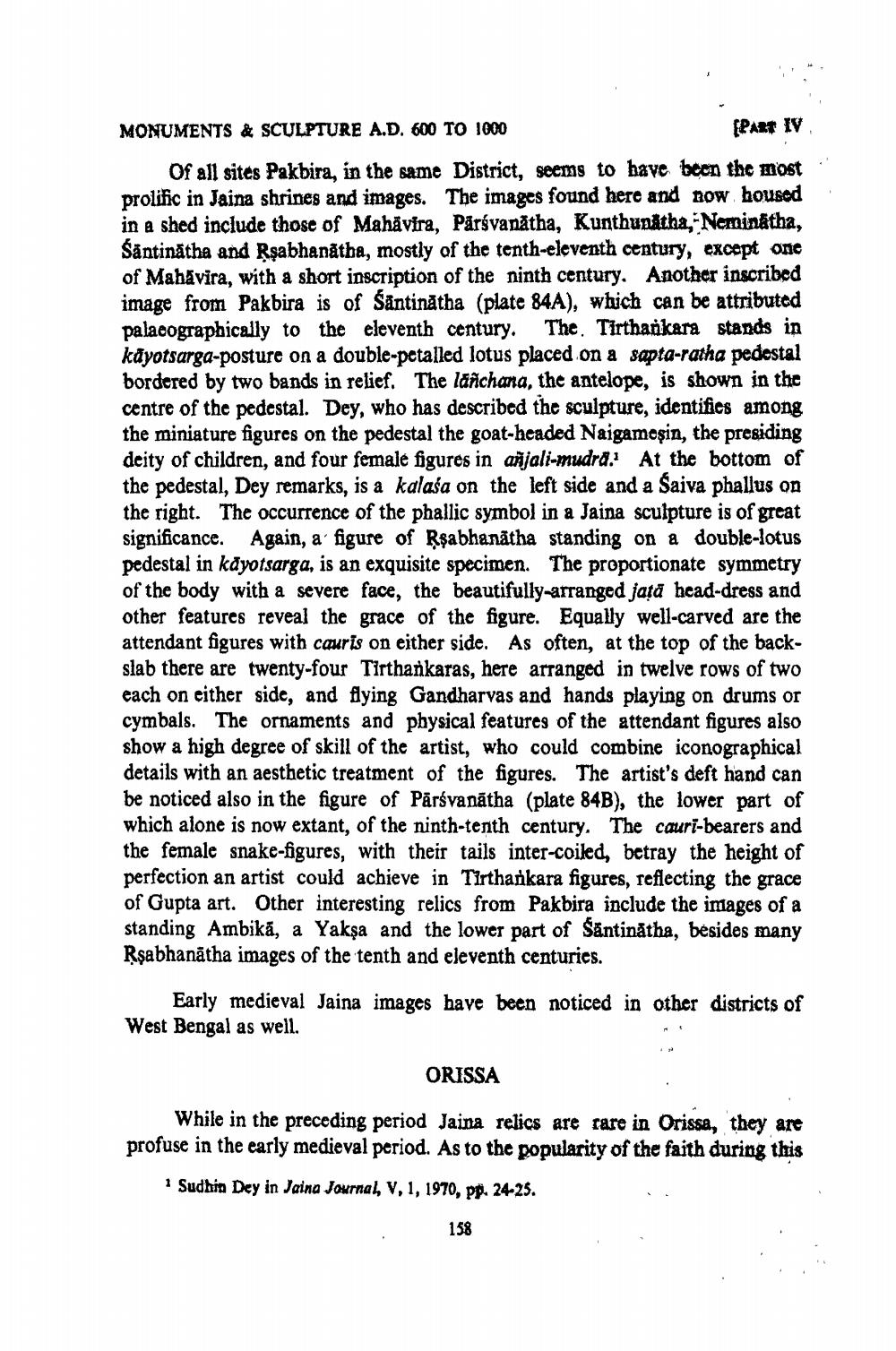________________
MONUMENTS & SCULPTURE A.D. 600 TO 1000
(PART IV
Of all sites Pakbira, in the same District, seems to have been the most prolific in Jaina shrines and images. The images found here and now housed in a shed include those of Mahävira, Pärávanátha, Kunthunitha, Neminātha, Säntinătha and Rsabhanatba, mostly of the tenth-eleventh century, except one of Mahavira, with a short inscription of the ninth century. Another inscribed image from Pakbira is of Såntinātha (plate 84A), which can be attributed palacographically to the eleventh century. The. Tirthankara stands in käyotsarga-posture on a double-petalled lotus placed on a sapta-ratha pedestal bordered by two bands in relief. The lañchana, the antelope, is shown in the centre of the pedestal. Dey, who has described the sculpture, identifies among the miniature figures on the pedestal the goat-headed Naigamoşin, the presiding deity of children, and four female figures in añjali-mudra. At the bottom of the pedestal, Dey remarks, is a kalasa on the left side and a Saiva phallus on the right. The occurrence of the phallic symbol in a Jaina sculpture is of great significance. Again, a figure of Rşabhanātha standing on a double-lotus pedestal in kdyotsarga, is an exquisite specimen. The proportionate symmetry of the body with a severe face, the beautifully-arranged jata head-dress and other features reveal the grace of the figure. Equally well-carved are the attendant figures with cauris on either side. As often, at the top of the backslab there are twenty-four Tirthankaras, here arranged in twelve rows of two each on either side, and flying Gandharvas and hands playing on drums or cymbals. The ornaments and physical features of the attendant figures also show a high degree of skill of the artist, who could combine iconographical details with an aesthetic treatment of the figures. The artist's deft hand can be noticed also in the figure of Pārsvanātha (plate 84B), the lower part of which alone is now extant, of the ninth-tenth century. The cauri-bearers and the female snake-figures, with their tails inter-coiled, betray the height of perfection an artist could achieve in Tirthankara figures, reflecting the grace of Gupta art. Other interesting relics from Pakbira include the images of a standing Ambikā, a Yakşa and the lower part of Säntinátha, besides many Rşabhanātha images of the tenth and eleventh centuries.
Early medieval Jaina images have been noticed in other districts of West Bengal as well.
ORISSA
While in the preceding period Jaina relics are rare in Orissa, they are profuse in the early medieval period. As to the popularity of the faith during this
Sudhin Dey in Jaina Journal, V, 1, 1970, pp. 24-25.
158




